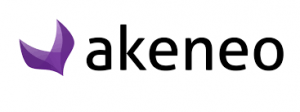There are many Product Information Management Systems on the market, so making a choice is not easy. Open Source PIM software in general offers many benefits to enthusiasts. These include flexibility, affordability and modularity. Meanwhile, there are several Open Source PIM (Product Information Management) Systems that are really worthy of attention.
In this article, we compare the three most well-known Open Source PIM Product Information Management Systems on the Market – AtroPIM, Pimcore and Akeneo.
Sit down, because this is our longest blog to date. It may be boring to read, but on each topic you can tick off which Open Source PIM solution is most suitable for you.
Positioning Open Source PIM
 |
 |
|
| Configurable product information system with portal functionality to engage suppliers, external employees, partners and customers. AtroPIM is based on AtroCore, Master Data Management (MDM) and can be expanded with the AtroDAM solution. | All-in-one solution consisting of Product Information Management (PIM), Digital Asset Management (DAM), Content Management System (CMS), Master Data Management (MDM), Customer Data Platform (CDP) and a Ecommerce solution. | Extensible Product Information Management (PIM) and Product Experience Management (PXM) System with add-ons for importing data from different suppliers, sharing catalogs with business partners and syndicating product information. |
Open Source PIM Architecture
Open Source PIM : AtroPIM
There is a single core version of the software (AtroCore), which can be extended with premium and free extensions. AtroPIM, AtroDAM are also extensions for AtroCore. On-Premise or Cloud-based use is possible.
Open Source PIM : Pimcore
There is a single all-in-one core version of the software, which can be expanded with additional bounties and free extensions. On-Premise or Cloud-based use is possible.
Open Source PIM : Akeneo
There are 3 editions of the software. Only the Community Edition can be used on premise. Growth and Enterprise Editions are SaaS solutions. It is not possible to extend the Community Editions with the modules dedicated to the Enterprise Edition. All 3 editions are built on the same core code base.
Master data management
AtroPIM
Management of all data is possible. All kinds of relationships are possible between the entities – one-to-many, many-to-one, and many-to-many. Programming is necessary to store additional information for a many-to-many relationship. There are approximately 20 data types with the ability to configure rules for intelligent validation, e.g. min and max values for data types. There is a separate data type for storing digital assets.
Pimcore
Management of all data is possible. Pimcore offers the most advanced MDM functionality. An in-depth understanding of the system is required. All kinds of relationships are possible between the objects in the system – one-to-many, many-to-one, and many-to-many. Programming is necessary to store additional information for a many-to-many relationship. There are more than 30 data types.
Akeneo
Only product information management is possible. You cannot manage additional information out of the box. You can still deploy your own extensions to manage additional data.
Data Model Configuration
AtroPIM
AtroPIM has a configurable data model, which is based on entities. You can create new entities and edit existing entities. Configuration of the data model is intuitively understandable to people who know how relational databases work.
Pimcore
Pimcore has a configurable data model, which is based on objects. You can create new objects or edit existing objects. “Know How” is required to perform a configuration.
Akeneo
No configuration of the data model is possible, but the existing data model and layouts can be modified/extended through custom programming.
User Interfaces (UI)
All three systems are completely web based and have a very fast user interface.
AtroPIM
AtroPIM is the only fully mobile friendly application (with a responsive UI design). There are 3 themes out of the box – classic, dark and light. UI is panel based, there are no tabs. There are multiple configurable dashboards based on predefined dashboards. The administrator can configure separate navigation for each user. All UI layouts are fully configurable.
Pimcore
Pimcore only provides mobile-friendly interfaces for portals (websites, online stores), which always have to be developed individually. The user interface is tab based, looks complicated and takes some getting used to. So it may take a while to find the information or feature you're looking for. There are user specific and configurable dashboards. Creating custom layouts based on the master definition is possible. It overrides the settings for the visual aspects of the layout and data components.
Akeneo
Akeneo is not mobile friendly. It offers a polished simplified user interface. So it is easy for everyone to learn how to use the system. There are several pre-configured dashboards depending on the user role.
Import/Export
AtroPIM
Various import and export feeds can be configured without any programming (general and channel specific). You can configure, import or export data for each entity in the system, along with the data for the related entities (e.g. product with their assets, product with their catalogs etc). Additional import and export feed types can be programmed.
Pimcore
Easy import and export of the data for one data object (without related data) is possible. Complicated import and export scenarios are not possible without additional programming.
Akeneo
There are many predefined “Tasks” for importing and exporting data. Additional “Jobs” can be implemented programmatically.
Workflows
AtroPIM
Workflows are very flexible and can be implemented at low cost (Workflow Module is required). Workflow implementation should be done by programmers, not operators. The user interface configuration options (eg like a flowchart) are very limited.
Pimcore
AtroPIM and Pimcore use the same Symfony Workflow Component for managing workflows, so the technical capabilities are almost the same for both systems. Pimcore has very flexible workflows, which can be implemented at low cost. It should be done by programmers, not operators. There are no UI configuration options (e.g. like a flowchart).
Akeneo
Workflows are only possible in the Enterprise Edition. These are quite simple and mainly cover the approval process.
Digital Asset Management (DAM)
AtroPIM
AtroPIM allows the use of a proprietary DAM (AtroDAM) or other third-party DAM system. Open Source PIM AtroPIM and AtroDAM integrate seamlessly as a single software instance. All uploaded files are automatically displayed in DAM. There are fields and attributes of type “asset”. AtroDAM is highly configurable. There is asset typing. You can manage any kind of metadata that has workflows (workflows module is required).
Pimcore
DAM is an integral part of Pimcore and is the most functional of these 3 systems. Assets can be configured like any other object in the system. Image editing and on-the-fly image and video conversion is possible. You can manage any kind of metadata and have workflows. You can preview many images, videos and document formats.
Akeneo
DAM is only available in the Enterprise Edition. Third-party Dam systems integrate with the Community Edition.
Data hierarchy
AtroPIM
Products inherit characteristics from product families. By using a premium module, you may have hierarchy within product families. Product variants inherit attribute values from parent products (the Product Variants module is needed). You can disable the inheritance and set a separate value.
Pimcore
Pimcore offers the most advanced inheritance scenarios out of the box with no extensions. Product variants inherit attributes from the parent product. You can disable the inheritance and set a separate value.
Akeneo
Products inherit attributes from families. Product variants inherit characteristics from parents. No other inheritance is possible. Inheritance of certain traits cannot be disabled.
Connectivity and API
All three systems can be connected to any third-party system.
AtroPIM
AtroPIM has an API-oriented software architecture, which means that the front-end always uses API to work with the backend. So the REST API is available for everything, including customizations and custom configurations.
Pimcore
Open Source PIM Pimcore implements GraphQL and offers many configurations, for example for creating your own entry points.
Akeneo
Akeneo offers REST API as an additional application. Customizations are not automatically available via REST API. This should be expanded accordingly.
Portals
AtroPIM
Different types of portals can be configured for suppliers, partners, employees and customers. Portals operate as a “PIM subsystem” and can have several users with roles assigned to them to implement restricted access for them.
Pimcore
Portals can be implemented through additional programming. There is no standard embedded portal functionality.
Akeneo
Akeneo has no portals. Onboarder and shared catalogs can be used to onboard suppliers and customers. These are only available in the Enterprise Edition. There is no embedded portal functionality.
Access Control and Permission Management
AtroPIM
User permissions are based on a user, teams, and role concept. You have very flexible access control, even for custom entities. You can create different roles. Multiple roles can be assigned to users and teams. Users also inherit roles from their teams. The following access levels are possible – for own data records, for the own team's data files, for all data files. Permissions (show, edit, hide) can be set for one field.
Pimcore
User permissions in Pimcore are based on a user and roles concept. Access to any object in the system can be configured for a role. A user can have more than one role assigned to them. There are no access levels, but “workarounds” can be implemented to achieve this functionality.
Akeneo
User permissions are based on a users and roles concept. You have easy access control. You can create different roles and assign predefined permissions to these roles for a predefined list of entities. One user can have more than one role assigned to them. There are no access levels and no field-level permissions.
Open Source PIM & Product Experience Management (PXM)
AtroPIM
AtroPIM offers many features for omni-channel commerce. You can work with different catalogs, channels, have channel specific and localized product information and export channel specific data. Product data syndication is powered by “Channable” (paid solution that allows >2500 channels to be connected).
Pimcore
As an MDM solution, pimcore is not intended to be a solution for PXM, but as a highly configurable system it can be configured to be used for omni-channel commerce. Product data syndication is powered by “Productsup” (paid solution that allows >2000 channels to be connected).
Akeneo
Akeneo offers many features for PXM out of the box. You can manage different channels, channel specific or localized information. Akeneo offers its own module for syndication of product information to Amazon, GoogleShopping, Alibaba and eBay.
Open Source PIM Ratings
AtroPIM
Classification systems can be implemented at low cost. Own classification systems are possible. Classification systems such as eCl@ss, ETIM or GS1 can be easily implemented. Import and export can be confirmed as via additional import/export feed types. Multiple simultaneous classifications are possible.
Pimcore
Classification systems can be implemented at low cost. Own classification systems are possible. You can make structure assignments for product data based on industry-specific classification systems such as eCl@ss, ETIM or GS1. Multiple simultaneous classifications are possible. The input and output of the classified information must also be programmed.
Akeneo
The data model was not created to provide the classification systems. Only temporary solutions are conceivable. A lot of programming work is required.
Control and version control
AtroPIM
AtroPIM tracks changes for each data field or attribute. It is possible to restore the old value with the click of a button (the revision module is needed). Currently there is no version for the entire data record.
Pimcore
All changes are automatically logged for documents, assets and objects. You can save as many versions as you want and choose which version to publish.
Akeneo
The Community Edition gives you access to the history of data changes for each attribute.
Akeneo provides version control of the product data only in the Enterprise Edition.
Open Source PIM Collaboration
AtroPIM
AtroPIM offers a lot for collaboration and communication within the system. You can have an owner and assigned user for a data record, use teams, post comments, lead discussions (the discussion module is needed), mention other users (so they receive notifications), subscribe to data records.
Pimcore
There is no communication stream for commenting or viewing the history of field-level changes. There is no owner and assigned user for data records. Workarounds are possible through the data model configuration.
Akeneo
There is no owner and assigned user for data records. Posting comments and viewing the history of changes is possible.
Data quality and completeness
AtroPIM
AtroPIM measures total completeness, completeness for global values, for each language and channel used (the completeness module is needed). There are several dashboard widgets to check the completeness statistics. Data is automatically validated as the type. Data records can be saved with blank required fields. Completeness is available for every entity in the system. Data records can be filtered at the completeness level.
Pimcore
Pimcore has numerous functionalities for defining and improving data quality and monitoring the completeness of data. Calculated fields should be used to check the completeness of individual attributes or languages. Use data validation and data quality reports for a central overview. Mandatory fields must be filled in to save the data record.
Akeneo
Akeneo measures quality scores and completeness of the data records. The completeness statistics are displayed on the preconfigured dashboards. Data is automatically validated based on its type. Data records can be saved with blank required fields. Completeness is only available for products.
Multilingualism and translations
All 3 systems support multilingualism and allow the use of localizable fields/attributes. Translations are not natively supported, but additional extensions can be used to enable them.
Open Source PIM Community
AtroPIM
AtroPIM is relatively new to the market and has a relatively small community. There are not as many extensions available as for Pimcore or Akeneo. Most paid modules come directly from AtroPIM.
Pimcore
Pimcore has a large community and many extensions are available. Much is free, but specific often for sale. Most modules come from partners.
Akeneo
Akeneo Open Source PIM has a large community and many extensions are available. Most modules come from partners.
Conclusion
We weren't looking for the best Open Source PIM solution. Any business can have a PIM solution that best suits their needs and requirements.
Pimcore is the most flexible and complicated system in our comparison, so it offers a lot of features in many business areas. Akeneo is the simplest and easiest to use, which many users really love. However, Akeneo is not an option if your product structure is relatively complicated or if you want to manage more than just product data. AtroPIM is somewhere between the two – it offers high flexibility and configurability and is easy to use.
If you would like help choosing the right PIMM solution, feel free to send us an email message.














